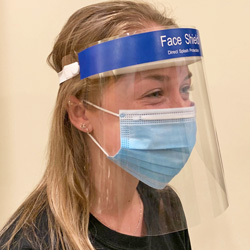Dear Colleagues,
Our Occupational Medicine clinic saw two patients who were from the same company, performing the same duties, namely powder spray coating using a chemical called triglycidyl
isocyanurate (TGIC). They were assessed and the clinic seemed convinced that this chemical is a sensitizer, causing their occupational condition.
A factory visit to understand exposures and associated occupational setting well, was also undertaken . The process observed was
similar to what is described in literature.
The Factory Management seems to be keen that we investigate this further, as they are adamant this chemical is not the likely cause
of their respiratory (asthmatic) effects. Another point from the company is that the TGIC is actually bound to a resin thus not
active on its own as it is already in a bound state (not freely available).
My question is: Is
TGIC found in the sample/ that they use is freely available as a sensitiser? Are there other less harmful substitutes?
BVK
Dr
Boitumelo V. Kgarebe Phd(London) FAAS
Head:
Analytical Services
25
Hospital Street, JHB 2001
National
Institute for Occupational Health
National
Health Laboratory Service
Tel:
+27(0)11 712 6410 |
Mobile: +27(0)82 | Fax: +27(0) 712 6545
